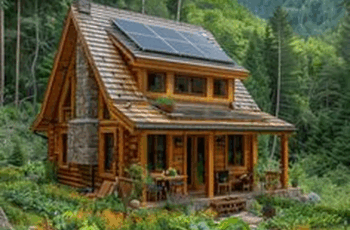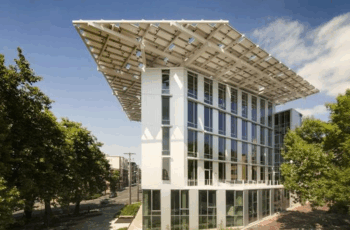
Have you ever dreamed of escaping the daily grind, trading traffic jams and utility bills for peaceful mornings surrounded by nature? You’re not alone. More and more people are embracing off-grid living — a lifestyle where you rely on your own resources for power, water, and food, free from the constraints of modern infrastructure.
But what’s behind this growing trend? For some, it’s the desire to slow down and simplify life. For others, it’s about sustainability and reducing their environmental impact. And let’s not forget the rising cost of living — owning an off-grid cabin can be a smart financial move in the long run.
Whether you’re looking for a weekend retreat or a permanent escape, off-grid living offers a unique sense of freedom and connection to nature. But is it as idyllic as it sounds? Let’s dive into what makes this lifestyle so appealing, what you need to consider before making the leap, and whether it could be the right fit for you.
1. The Appeal of Off-Grid Living
What makes off-grid living so tempting? For many, it’s more than just a lifestyle choice — it’s a chance to reclaim freedom, embrace sustainability, and live life on their own terms. Here’s why it draws so many:
- Escape the Chaos: Imagine waking up to birdsong instead of blaring alarms and rush hour traffic. Off-grid living offers a peaceful retreat from the constant noise of modern life.
- Self-Sufficiency and Sustainability: Producing your own energy with solar panels, collecting rainwater, and growing your own food gives you a deep sense of independence while reducing your carbon footprint.
- Financial Freedom: After the initial setup, off-grid living can significantly cut monthly expenses. No more hefty utility bills or rising rent — just you, your cabin, and nature.
- Closer Connection to Nature: Whether it’s hiking, gardening, or simply stargazing, off-grid living brings you closer to the natural world. It’s a slower pace of life where you learn to appreciate the little things.
2. What’s Driving the Trend?
Why are more people making the leap to off-grid life now? Several factors fuel this growing movement:
- The Rise of Remote Work: With more people working from home, living near crowded cities isn’t necessary anymore. Cabins in the woods or by a quiet lake suddenly became viable options.
- Post-Pandemic Priorities: The pandemic made many rethink what truly matters — peace, safety, and self-reliance became top priorities, sparking interest in simpler, sustainable living.
- Soaring Living Costs: Housing prices and utility bills aren’t getting cheaper. Off-grid living offers a more affordable alternative, especially for those looking to build a future without debt.
- Technology Advancements: Solar panels, water filtration systems, and composting toilets have made off-grid living more accessible and comfortable than ever before.
- Inspiration from Social Media: Platforms like Instagram and YouTube have turned #CabinLife into a dreamy escape, inspiring thousands to trade city lights for starry skies.
Off-grid living isn’t just about surviving — it’s about thriving in a way that aligns with personal values and offers a sense of freedom few other lifestyles can match.
3. Essentials for Off-Grid Living
Living off the grid isn’t as simple as packing up and heading into the wilderness. It takes planning and preparation. Here’s what you’ll need:
- Reliable Power Source: Most off-grid homes rely on solar panels, but wind turbines can be great in breezy areas. Many combine these with backup generators. Without dependable power, off-grid life can quickly become tough.
- Water Supply: Access to a river, spring, or rainwater collection system is essential. But the real key is good filtration — even clear water can harbor harmful contaminants.
- Heating and Cooking: Wood stoves are popular since they provide warmth and cooking options. Solar ovens or propane alternatives can work depending on your location.
- Waste Management: Composting toilets, greywater recycling, and septic systems keep things running smoothly. Off-grid living doesn’t mean sacrificing hygiene — just requiring creativity and responsibility.
4. Challenges to Consider
While off-grid life sounds idyllic, there are hurdles to keep in mind:
- Setup Costs: Solar panels, turbines, filtration systems, and construction can add up. Starting out might feel expensive, but long-term savings often justify the investment.
- Weather Dependence: Solar panels don’t work as well on cloudy days or during harsh winters. Water collection systems may falter in droughts.
- Maintenance: You’ll be your own handyman. No one else will fix broken systems. Basic DIY skills are essential.
- Isolation: Many off-grid spots are far from towns and friends. If you thrive on social interaction, this could be challenging.
Is Off-Grid Living Right for You?
If you value sustainability, independence, and peace, off-grid living can be deeply rewarding. The satisfaction of self-sufficiency and living free of public utilities is unique.
However, if convenience, social life, or modern amenities are crucial, the transition might be tough. Off-grid isn’t for everyone, but dipping your toes in first — maybe with a weekend stay or small off-grid projects at home — can help you decide.
At the end of the day, off-grid living lets you build a life aligned with your values, giving you freedom to design your own idea of home. Are you ready to take the plunge?


